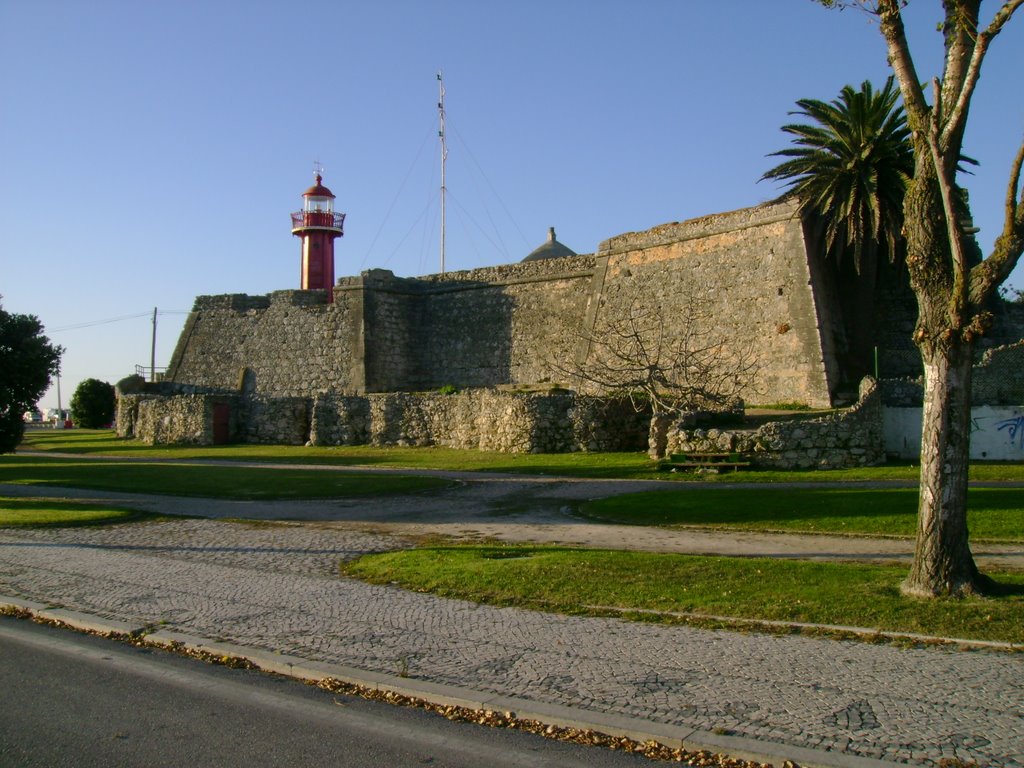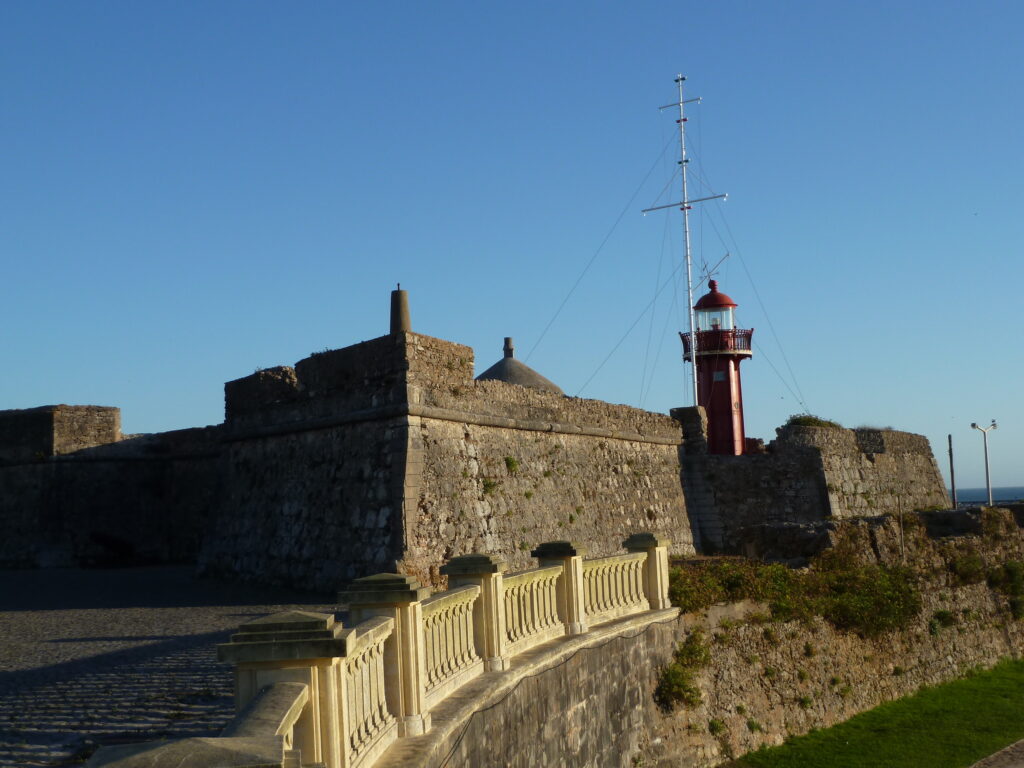The importance of defending the port and bay of Figueira da Foz and Buarcos has been an ever-present question for the inhabitants of the region over the centuries. As such, in October 1585, some “learned” men from the Coimbra City Council wrote to Filipe I asking for the construction of a fort, to be erected at the entrance to the Mondego bar, in the rocky area known as Monte de Santa Catarina. The construction works of the fortress, which would be paid for by the rent of the village of Buarcos, the University of Coimbra, Cabido and the Monastery of Santa Cruz, will have started some time later.
The fort of Santa Catarina has a curious structure, which contradicts the military architecture treaties of the time. Due to the irregularity of the terrain, the plan of the fort was developed in a triangular shape, advised against by the treaty workers because it caused a very acute angle on the sides of the bulwark, which could render the defense unfeasible. The remaining bastions have dovetail-shaped faces. Inside the square were built the barracks and the chapel of Santa Catarina, a square oratory with a Mannerist typology, built (or rebuilt) around 1598.
In 1602 the region of Figueira da Foz was attacked by English pirates, and the fort was looted. Later, after the restoration of independence, D. João IV and the military engineers of the kingdom outlined a plan to reinforce the defense of the sea coast, which included the reconstruction of fortresses that were obsolete or ruined and the construction of new fortresses, such as reinforcement of lines of fire. Thus, in 1643, new construction works were started in the fort of Santa Catarina, with one of the curtains of the fortress having been enlarged so that 15 pieces of fire could be laid.
However, and despite its importance in the defense of the Mondego river bar, there is news that in 1680 the fort was in ruins, and then a budget was made for the rebuilding, the amount of which was destined to it ended up being used in expenses of war.
During the third invasion of the French armies, in 1808, the fort was occupied by Napoleonic troops, and a detachment was sent to defend the fort a few months later, which, after recovering the square and dismantling the French army’s armament, made it possible to secure the disembarkation of Wellesley’s troops in the Lavos area. Throughout the nineteenth century the fortress was the subject of successive assessments, which referred to the need to carry out repair works.
In 1911, part of the space in the fort of Santa Catarina was given to the Instituto de Socorros a Náufragos, and the remaining space was leased to Ténis Club Figueirense a few years later. It was also in the early years of the twentieth century that the iron lighthouse was built in the center of the fortress, which has been deactivated since 1991.
Forte de Santa Catarina

Contact
Forte de Santa Catarina
dgpc@dgpc.pt
Figueira da Foz Avenue of Spain
+351 21 361 42 00




